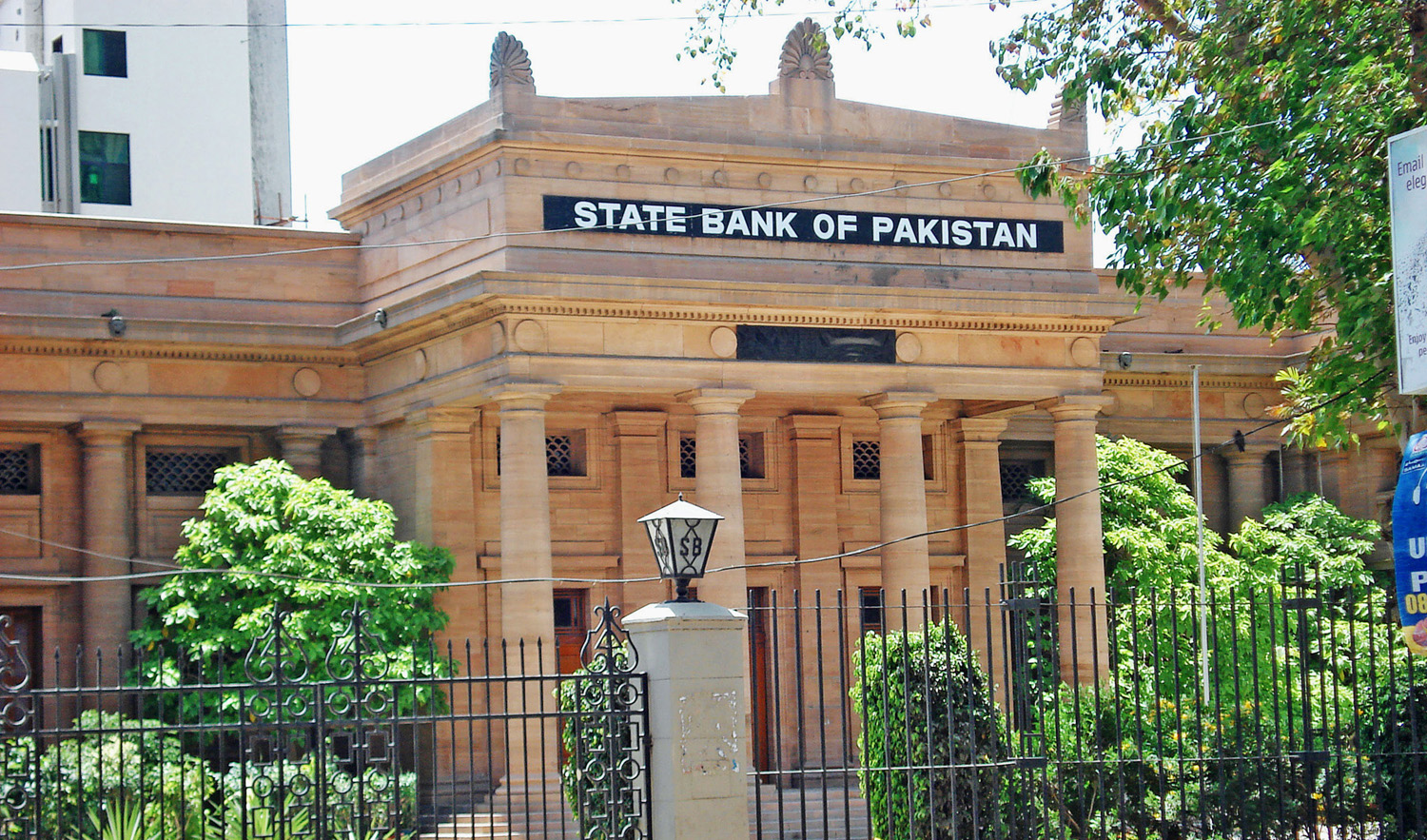KARACHI: Pakistan has posted over $13 billion or 4,688 percent higher current account deficit (CAD) this fiscal year from July 21 to March 22, mainly due to higher imports amid surging global commodity prices, according to official data and analysts.
The gap between foreign expenditures and low income of the South Asian nation almost doubled in March to over $1 billion, compared to $519 million recorded in February 2022 and 179% higher than $369 million recorded in the same month of previous year, according to the data released by the central bank on Saturday.

This undated file photo shows a general view of State bank of Pakistan premises in Karachi. (Shutterstock)
The higher deficit is attributed mainly to increased global commodity prices, particularly the prices of energy products that Pakistan imports to meet domestic energy needs.
Pakistan’s imports of petroleum products have more than doubled to $14.81 billion dollar during this period (July-March) as compared to $7.55 billion during the same period of last fiscal year, according to the Pakistan Bureau of Statistics (PBS).
This comes at a time when Pakistan's finance minister, Miftah Ismail, is in Washington to deal with International Monetary Fund (IMF) officials for the revival of stalled $6 billion loan program.
“The CAD data is important as Pakistan negotiates with the IMF for the revival of stalled program because the data will come under discussions and will determine the future course of action,” Samiullah Tariq, research director at Pakistan-Kuwait Investment Company, told Arab News on Sunday.
“The higher CAD is mainly due to global commodity prices that remain elevated due to a host of factors, including the Ukraine war.”
However, Pakistan’s central bank said the deficit in March 2022 was lower as the non-oil balance in the current account remained in surplus for the second consecutive month in March.
“Despite high global commodity prices, the turnaround in the current account continues, with a deficit of $1bn in March, $500 million lower than the average during FY22. Moreover, the non-oil balance remained in surplus for the second consecutive month,” the State Bank of Pakistan said on Twitter.
Imports of goods and services cost a total of $62.14 billion during July-March as compared to exports of $28.85 billion. Rising imports have widened the trade deficit to over $30 billion putting lot of pressure on the national currency, with the dollar closing at Rs186.75 in the interbank market on Saturday.
Analysts expect that a favorable outcome of talks between the IMF and Pakistani authorities would ease pressure on foreign exchange reserves and the currency.
“I hope that the IMF program would be revived because lot of activities have been taking place [in Washington] during the visit of finance minister,” Tariq said.
Experts believe the current account deficit will remain around $16-17 billion for the whole year due to an expected rise in exports and remittances.
Pakistan has recorded around 30 percent growth in exports of Information Technology (IT) services to $1.94 billion from July 2021 to March 2022, up from $1.50 billion the previous year, according to the IT and Telecom ministry.




















